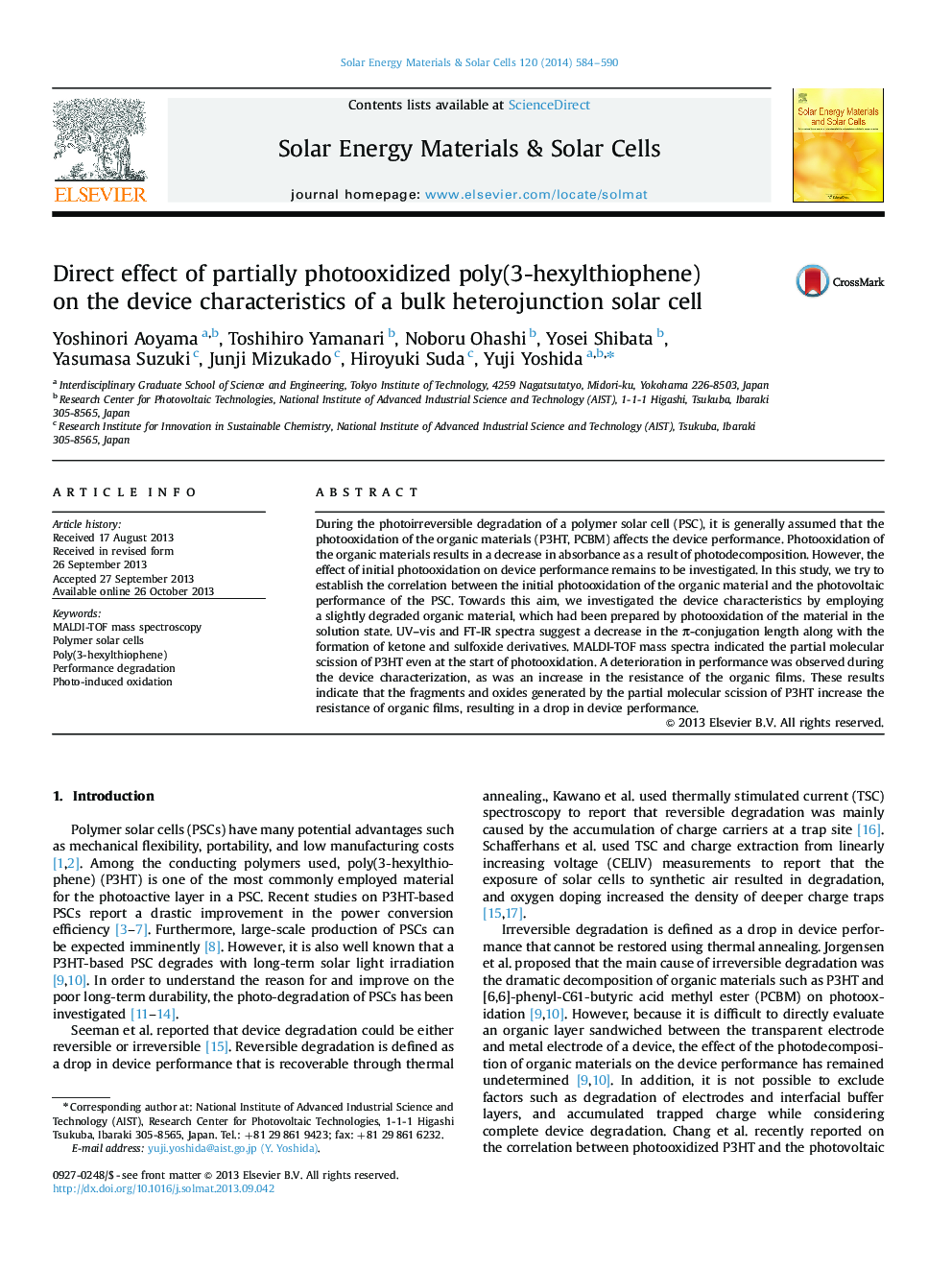| کد مقاله | کد نشریه | سال انتشار | مقاله انگلیسی | نسخه تمام متن |
|---|---|---|---|---|
| 78170 | 49319 | 2014 | 7 صفحه PDF | دانلود رایگان |
• We investigated the device characteristics by employing a partially photooxidized organic material prepared using a solution photooxidation technique.
• In the initial photooxidation time, partial molecular scission of P3HT and a formation of the oxide fragment were observed.
• Oxide fragments by the partial molecular scission increased the resistance of the organic films, severely decreasing the device characteristics.
During the photoirreversible degradation of a polymer solar cell (PSC), it is generally assumed that the photooxidation of the organic materials (P3HT, PCBM) affects the device performance. Photooxidation of the organic materials results in a decrease in absorbance as a result of photodecomposition. However, the effect of initial photooxidation on device performance remains to be investigated. In this study, we try to establish the correlation between the initial photooxidation of the organic material and the photovoltaic performance of the PSC. Towards this aim, we investigated the device characteristics by employing a slightly degraded organic material, which had been prepared by photooxidation of the material in the solution state. UV–vis and FT-IR spectra suggest a decrease in the π-conjugation length along with the formation of ketone and sulfoxide derivatives. MALDI-TOF mass spectra indicated the partial molecular scission of P3HT even at the start of photooxidation. A deterioration in performance was observed during the device characterization, as was an increase in the resistance of the organic films. These results indicate that the fragments and oxides generated by the partial molecular scission of P3HT increase the resistance of organic films, resulting in a drop in device performance.
To realize the correlation between the initial photooxidation of the organic material and the photovoltaic performance of the PSCs, we investigated the device characteristics by employing a partially photooxidized organic material prepared using a solution photooxidation technique. A 10-nm blue shift was observed in the UV–vis spectra, and it was considered that the conjugation length of P3HT was reduced during this initial photooxidation period. In the FT-IR spectra, the formations of a carbonyl species and sulfoxide derivatives were observed. In the AFM image, significant changes in the surface morphology of the films were not seen. In the MALDI-TOF mass spectra, a partial molecular scission of P3HT was observed. Significant degradations in the device characteristics were observed in the I–V and IPCE spectra, and an increase in the resistance of the organic films was observed in the impedance spectra. These results indicate that the oxide fragments accompanied by a partial molecular scission of P3HT increased the resistance of the organic films, thereby severely decreasing the device characteristics.Figure optionsDownload as PowerPoint slide
Journal: Solar Energy Materials and Solar Cells - Volume 120, Part B, January 2014, Pages 584–590
